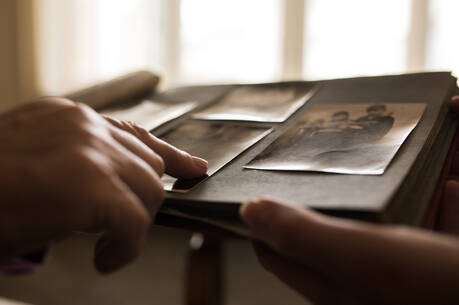Have you ever noticed that Jesus begins and ends his public ministry in the wilderness? These deserts are the geographical bookends of the greatest story ever told. In today’s Gospel we have Jesus in the desert for forty days. Much later, when condemned to death, Jesus is led out of the city and crucified at Golgotha, another dry and desolate location. In both places Jesus is tempted. In Mark we are never told what Satan’s temptations in the desert were about. Luke and Matthew fill in those details. On the cross, however, Mark tells us that the crowd tempts Jesus to work a miracle, come down from the cross and save himself. In the first desert Jesus is ministered to by the angels and emerges to proclaim that the kingdom of God is close at hand. In the later desert Jesus is ministered to by his women disciples and is put to death as a consequence for the way he lived out the Kingdom he proclaimed.
It’s clear from all the Gospels that the desert and the temptations stayed with Jesus throughout his life. What a comfort this is to us. Many of us do not need to go out and find a physical desert to know its claim on our lives. Temptations do not know geographical limitations. Indeed, the greater the number of options, the more temptations we have to take a destructive path.
When we look at how the desert is used in the Bible, mythology, art, literature and the cinema two competing images emerge. The first is that the desert can be a place of a place of loss and ruin where some great heroes have gone and not returned. In another equally venerable tradition journeys to the desert, while filled with a mixture of pleasure and pain, are abundant with revelation, transformation and recreation.
These two descriptions do not have to be contradictory. As we find in Jesus’ example, we do not have to give into the temptation that the desert is only about loss, but find a path there to negotiate a way out of it so that we can emerge recreated, the richer for the experience.
It’s important to remember in our own particular deserts that temptation is not sin. To be tempted by something is not the same as doing it. Temptations are the allures that make destructive choices look good. In one sense, the bad news is that we know from the lives of the saints that the closer we get to God, the more temptations increase. The good news is that we can learn how to deal with them.
Usually, temptations have a context and a history. They can come when we are feeling most deserted and vulnerable and they normally strike us at the most susceptible points in our character. To deal with them we need to be aware of their pattern, the way they con us into believing that the destructive behavior is “not that bad,” will be “just this once,” or “for the last time.” As well, it helps if we are aware of the danger signs in our lives which can weaken our defenses. Tiredness, boredom, anger, alcohol and drug use, lack of good communication and a poor self-esteem are common realities that can leave us more exposed than usual.
This Lent, as we venture with Christ into our figurative deserts, let’s do anything that helps our self esteem, deals with our anger, attends to why we might work or drink too much, and ensures that we are less stressed. Against what we might think, these activities could be the most helpful ways we can make sure we emerge from our desert the better for having been there.
Jesus in the Wilderness
Show Comments (
)
Comments are automatically closed two weeks after an article's initial publication. See our comments policy for more.
The latest from america
Gerard O’Connell and host Colleen Dulle analyze the reported forthcoming appointment of Archbishop Georg Gänswein, Benedict XVI’s longtime secretary and how it fits into the archbishop’s often publicly tumultuous relationship with Pope Francis.
A Reflection for Saturday of the Fourth Week of Easter, by Ashley McKinless
A Homily for the Fourth Sunday of Easter, by Father Terrance Klein
Hybrid schools offer greater flexibility, which can allow students to pursue other interests like robotics or nature studies or simply accommodate a teenager’s preferred sleep schedule.







